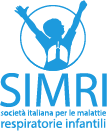Secondhand smoke (the smoke children breathe in from nearby cigarettes) is well-known to harm developing lungs, cause ear and respiratory infections, trigger asthma, and even lead to sudden infant death syndrome (SIDS) CDCRaising Children Network. Even when parents smoke outdoors or in another room, harmful residues—called third‑hand smoke—can cling to clothes, toys, furniture, and walls for months. Children absorb these toxins by breathing them in, touching contaminated surfaces, or putting things in their mouths. Research links third‑hand smoke to DNA damage, impaired immunity, respiratory problems, and increased cancer riskPMC+15PMC+15Mayo Clinic+15.
Vaping—while often seen as less harmful than smoking—is far from safe for young people. Vape aerosols contain nicotine, ultrafine particles, heavy metals, aldehydes, and volatile organic compounds that can irritate airways, damage lungs, and potentially harm developing brains. Pregnant women who vape may increase their baby’s risk for asthma and COPD. For bystanders, especially children, secondhand vapor may elevate exposure to formaldehyde and other toxics Verywell Health. A recent umbrella review finds youth who vape are 3x more likely to start smoking, with increased risks of asthma, bronchitis, pneumonia, and mental health issuesUS EPA+3The Guardian+3The Times+3.
Outdoor and indoor air pollution further compound risks. Children’s developing lungs absorb more pollutants, and exposure raises risks of asthma flare-ups, bronchitis, reduced lung development, and possibly ADHD and cardiovascular issues later in life.
What you can do:
-
Never smoke or vape indoors—including cars and near children.
-
Wash hands, change clothes, and avoid wearing smoke-exposed clothing around kids.
-
Avoid vaping near children; even aerosol can expose them to toxins.
-
Monitor outdoor air quality; keep kids indoors on high-pollution days and use HEPA filters.
-
Support smoking cessation with your doctor—quitting is the single biggest gift for your child’s health.
Secondhand Smoke, Vaping & Pollution: FAQs for Protecting Children
What is third-hand smoke and why is it dangerous to children?
Third-hand smoke is the residue left behind on surfaces from tobacco smoke. These toxic particles can persist for months and enter a child’s body through skin contact, ingestion, or inhalation—especially problematic in infants and toddlers. Exposure is linked to DNA damage, respiratory infections, and immune impairment.
Are e-cigarettes (vapes) safer than cigarettes for kids?
No. Although vaping avoids burning tobacco, it still delivers harmful nicotine, metals, aldehydes, and fine particles. Vaping by kids or near kids increases respiratory symptoms and addiction risk—and teens who vape often progress to cigarette smoking.
How does air pollution impact children’s respiratory health?
Children’s growing lungs absorb more pollutants like traffic smog or fine PM₂.₅, which can worsen asthma, slow lung development, and increase the risk of infections, high blood pressure, and behavioral issues.
Can pregnant women affect their baby’s health by vaping?
Yes. Vaping during pregnancy may raise risks of asthma and chronic lung disease (COPD) in children—even if vaping is less harmful than smoking, cocaine studies suggest nicotine can harm brain and organ development.
What can I do to protect my child?
Don’t smoke or vape indoors or near your children. Wash after exposure, monitor air quality, use HEPA filters, and get help quitting—these actions greatly reduce health risks.
No metadata found.



